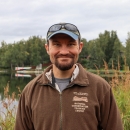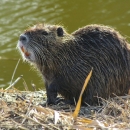This document outlines rapid response actions that should be taken to a rodent sighting in a previously rodent-free area or in the event of a potential ship grounding and subsequent rat spill. Eradication of established breeding populations of rodents is a much larger and longer-term effort; therefore, it is outside the scope of this document. The goal of this document is to consolidate information and facilitate communication within the United States Fish and Wildlife Service, as well as among partners. Many actions outlined in this document are specific to the USFWS, and may not be relevant for other agencies or organizations. However, the specific tasks outlined within each step can be modified to reflect the mandates, authorities, and jurisdictions of other agencies or organizations. Thereby serving as a tool for any group or agency completing rapid response actions for invasive rodents in Alaska.
Type of document
Plan
Guidance
Facility
Program
Species
FWS and DOI Region(s)






